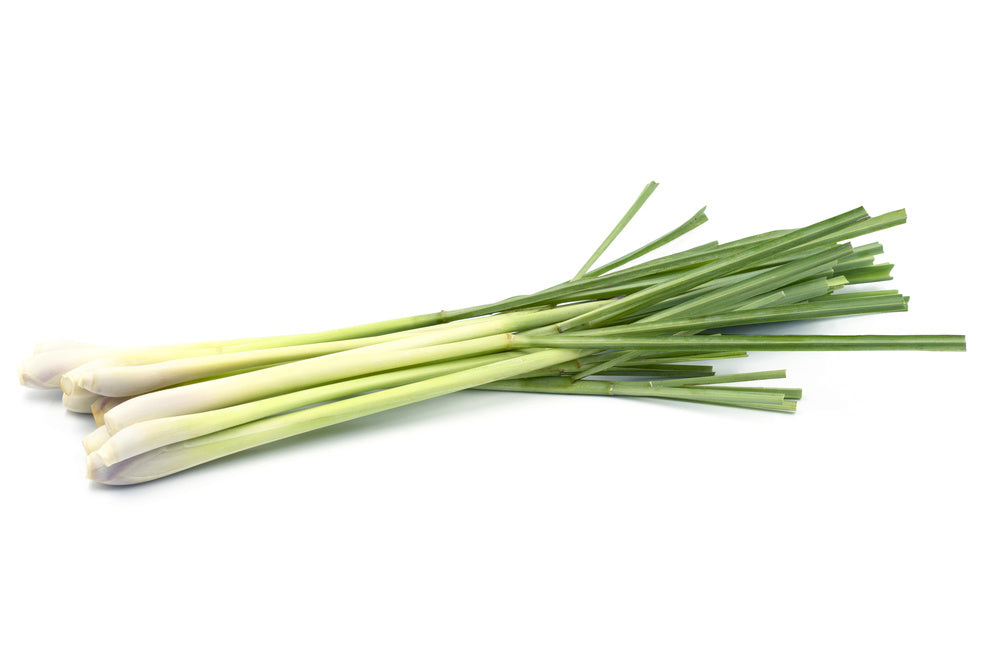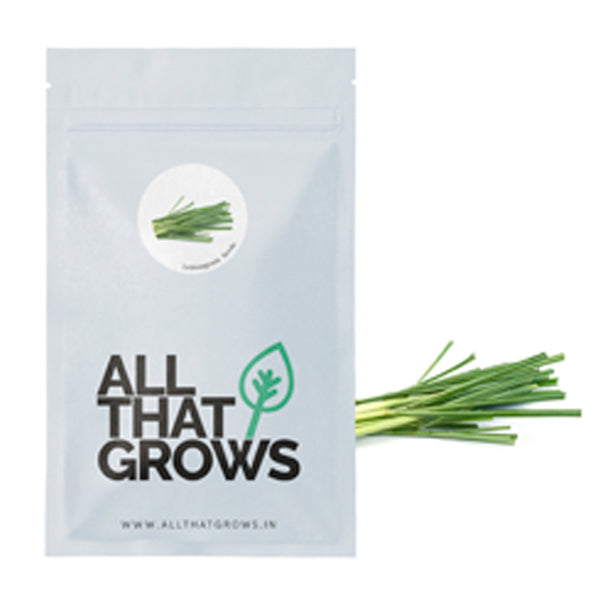



- SOWING
TIMEFebruary to April
- Sowing
DistancePlant to Plant - 24-30 inches
- Fruit
WeightN/A
- Fruit
ShapeN/A
- Days to
maturity70 to 90 days
- Details
- How to sow
- Reviews
You must have tasted the citrus and refreshing flavours of lemongrass in many curries and soups. Lemongrass is an incredibly versatile and easy to grow herb that has been an essential ingredient on Indian, Vietnamese, and Thai cuisine. Lemongrass is a perennial grass that is native to Southeast Asia. A member of the sugarcane family, the foliage of the grass has multifold uses. The distinct aroma and citrus flavour of the herb make it ideal for use in varied curries, soups, sauces and herbal teas. The stalks of lemongrass are light green to creamy white in colour. Lemongrass oil is also a great source of vitamin A. Lemongrass tea has also been in use as a panacea against common cold and flu. With it’s culinary and medicinal properties, lemongrass is another great flavour addition to your kitchen garden.
Planting instructions
Plant lemongrass seeds at a depth of ¼ inches in loose, well draining soil. The ideal soil temperature for germination of seeds should range between 18 to 22℃. Seeds will take anywhere from 10 to 20 days to germinate depending on the growing conditions. Harden off the seedling for a week before transplanting to a sunny location outside. The spread of the lemon grass plant can go upto 3-4 feet, hence it is advisable to plan the transplanting accordingly.
Growing Requirements
pests
Mainly snails and aphids can affect the plant which can be controlled with regular check ups. Lemongrass also tends to rot in soils with poor drainage so it’s important to maintain proper soil drainage.
soil
Lemongrass grows well in rich, well drained soils. Poor soils can also be mixed with cocopeat & compost to improve soil nutrition and drainage.
spot
Plant lemongrass in full sun for best results.
temperature
The ideal soil temperature for germination of seeds should range between 18 to 22℃.
watering
Watering is of paramount importance when it comes to foliage based herbs and plants. Lemongrass also requires optimum soil moisture to produce healthy stalks. However, soil drainage must be checked and maintained properly. Lemongrass leaves may start turning yellow or brown for lack of soil moisture.
how to harvest
Lemongrass stalks and leaves can be harvested once the stalks are at least half a inch thick. Snip the stalk about 1-2 inches above the base. Lemongrass is also a great herb for the purposes of freezing and drying as well.

Customer Reviews
The productiveness of any seed we sell is subject to your local climatic conditions*, the sowing method you adopt, and your commitment to the planting process. We give no warranty, expressed or implied, and are in no way responsible for the produce.
Please note that all our seasonal recommendations/ sowing information is as per the local climatic conditions. *For more information on the optimum conditions required for growing seeds in your region, please contact us at, hello@allthatgrows.in or Whatsapp us at, +91 8544865077
Questions & Answers
Ask a Question-
what do you use lemon grass for
Hi,
Thanks for reaching out to us.
The distinct aroma and citrus flavour of the herb makes Lemongrass ideal for use in varied curries, soups, sauces and herbal teas.Lemongrass tea has also been in use as a panacea against common cold and flu.
Let us know in case of any other query.
Thank you




Lemongrass Seeds
Seed Type : Non-Hybrid, Open Pollinated and Non-GMO
SOWING TIME : February to April
PLANT CHARACTER : Attractive grass stalks, upto 4-5 feet in height
LEAF CHARACTER : Light green leaves with creamy white stalks
HARVEST : 70 to 90 days after sowing
You must have tasted the citrus and refreshing flavours of lemongrass in many curries and soups. Lemongrass is an incredibly versatile and easy to grow herb that has been an essential ingredient on Indian, Vietnamese, and Thai cuisine. Lemongrass is a perennial grass that is native to Southeast Asia. A member of the sugarcane family, the foliage of the grass has multifold uses. The distinct aroma and citrus flavour of the herb make it ideal for use in varied curries, soups, sauces and herbal teas. The stalks of lemongrass are light green to creamy white in colour. Lemongrass oil is also a great source of vitamin A. Lemongrass tea has also been in use as a panacea against common cold and flu. With it’s culinary and medicinal properties, lemongrass is another great flavour addition to your kitchen garden.
Seed Type : Non-Hybrid, Open Pollinated and Non-GMO
SOWING TIME : February to April
PLANT CHARACTER : Attractive grass stalks, upto 4-5 feet in height
LEAF CHARACTER : Light green leaves with creamy white stalks
HARVEST : 70 to 90 days after sowing
- SOWING
TIMEFebruary to April
- Sowing
DistancePlant to Plant - 24-30 inches
- Fruit
WeightN/A
- Fruit
ShapeN/A
- Days to
maturity70 to 90 days
Planting instructions
Plant lemongrass seeds at a depth of ¼ inches in loose, well draining soil. The ideal soil temperature for germination of seeds should range between 18 to 22℃. Seeds will take anywhere from 10 to 20 days to germinate depending on the growing conditions. Harden off the seedling for a week before transplanting to a sunny location outside. The spread of the lemon grass plant can go upto 3-4 feet, hence it is advisable to plan the transplanting accordingly.
Growing Requirements
pests
Mainly snails and aphids can affect the plant which can be controlled with regular check ups. Lemongrass also tends to rot in soils with poor drainage so it’s important to maintain proper soil drainage.
soil
Lemongrass grows well in rich, well drained soils. Poor soils can also be mixed with cocopeat & compost to improve soil nutrition and drainage.
spot
Plant lemongrass in full sun for best results.
temperature
The ideal soil temperature for germination of seeds should range between 18 to 22℃.
watering
Watering is of paramount importance when it comes to foliage based herbs and plants. Lemongrass also requires optimum soil moisture to produce healthy stalks. However, soil drainage must be checked and maintained properly. Lemongrass leaves may start turning yellow or brown for lack of soil moisture.
how to harvest
Lemongrass stalks and leaves can be harvested once the stalks are at least half a inch thick. Snip the stalk about 1-2 inches above the base. Lemongrass is also a great herb for the purposes of freezing and drying as well.



 Sign In
Sign In








